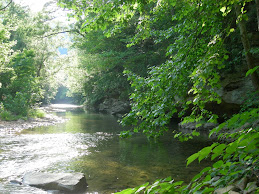“They had done cut all the timber off of the site,” Ed remembers. “I got to sit there lookin. Dozers were pushing the soil off. I saw that the momma bear had poked out her head, heard the dozer, and then gone back inside. They kept gouging her way… and then I watched them doze her in.” As Ed watched, the momma bear was buried alive with her cubs at her side.
“Now I’ve heard a bear die, and it depends how they’re shot. But there ain’t nothing like hearin that momma bawl, knowin her babies are dying as she gets dozed in. Those cubs don’t even have their eyes open. They might have been old enough to crawl, but they weren’t old enough to escape. What it witnessed that spring, it bothered me. It hurt me. I feel something needs to be done.”
Watch a video of Ed behind Marshfork
Watch a video of a bear running on an active Mountaintop Removal site.

More about the Black Bear
The Black Bear, Ursus americanas, is the state animal of West Virginia. It is the smallest bear in North America, with females typically weighing 100-200 lbs and males weighing 150-400 lbs. They may have a light brown or tan muzzle and some bears may have white chest markings. Black Bears are usually about 3 ft high and 4-6 ft in length. They are solitary animals except when a mother has cubs. Females usually give birth to 2 or 3 cubs and the cubs stay with their mother for about a year. Black bears eat all types of vegetation as well as fish, small mammals and carrion. Black bears have territory that can range up to 200 square miles for males and anywhere from one to 35 square miles for females. Usually males’ territories will overlap with other bear’s territories while females’ territories do not. Bear hunting is allowed in West Virginia and in 2006, between both the archery and gun seasons, 1,705 bears were taken.
Currently the West Virginia Department of Natural Resources is studying bear populations using radio tracking devices, so the sites of many of the dens are already known. Ed hopes that if more people learn about the bears being killed at the mountaintop removal sites, perhaps the state DNR and conservation groups can work with the coal companies to remove the bears from their dens before they are crushed.
Some useful links:
http://www.bear.org/Black/BB_Home.html
http://www.wvdnr.gov/Hunting/BBear.shtm
http://www.shgresources.com/wv/symbols/animal/
Text by Jen Osha and Sam McCreery
Photos by Sam McCreery
Video by Ed Wiley and Jen Osha





No comments:
Post a Comment